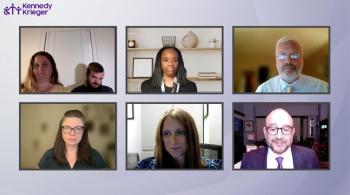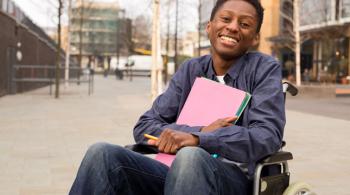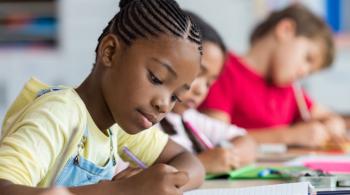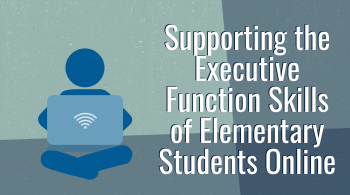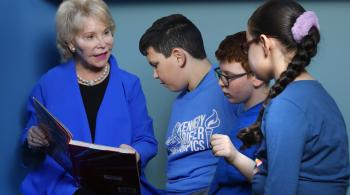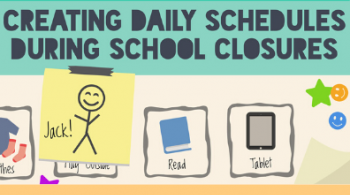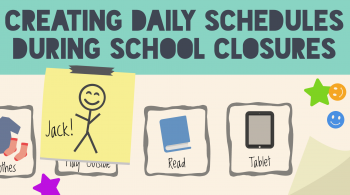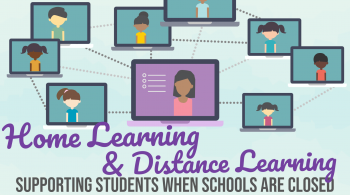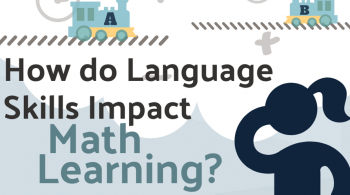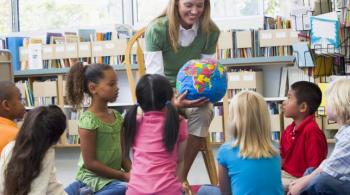January 16, 2018

Education consultant Lisa Carey met with Dr. Joan Kaufman, Director of Research at the Center for Family and Traumatic Stress at Kennedy Krieger Institute, in order to learn more about childhood trauma and the role teachers can play in fostering resilience and recovery.
LC: Many of the symptoms of childhood traumatic stress are similar to those of developmental disabilities such as ADHD. How can school-based personnel start to tell the difference?
JK: Concentration problems are a symptom of post-traumatic stress disorder (PTSD), ADHD, and many other childhood psychiatric disorders such as depression, which often occurs after childhood trauma. Some of the symptoms that are unique to PTSD and trauma reactions are things like hypervigilance and exaggerated startle. Those are the hyper arousal symptoms of PTSD which are different and not necessarily associated with something like ADHD. So, if a teacher sees a student who seems to always be on guard, or is apt to jump if they hear a loud noise, those would be examples of trauma specific symptoms.
It’s also important to remember that there can be triggers. For many children, loud noises, such as yelling, can be a trigger. Try to be attune to that. Some teachers may just naturally have a loud voice, and for some children, that may be difficult.
LC: How does the effect of trauma manifest differently for elementary, middle, and high school students?
JK: Some of the core features of trauma symptoms are seen across the age span, such as problems with sleep, nightmares, hyper arousal and irritability. With young children, you sometimes see a regression in behaviors, where they seem to have forgotten skills or tasks they were previously able to carry out. An example would be a child who was fully toilet trained now struggles in that area.
With older children, such as those in high school, you often see the onset of substance abuse as a way to regulate emotions. Self-injurious behaviors also become more common in adolescence, and depression can be seen in middle school-aged children, but the co-occurring depression is more common as they get older. The depression rate in children doubles from childhood to post-puberty. The literature points to a combination of developmental gains cognitively and neurobiologically as well, both in terms of hormones, and in terms of brain systems. But, children as young as preschoolers can meet criteria for major depression.
LC: What are some important first steps school-based personnel can take to better support students who have experienced trauma?
JK: I think it’s helpful when school personnel know what types of trauma students have experienced and think about the accommodations they may need. For example, I was extremely pleased recently when I was at a school meeting for one of my patients, who experienced extreme food deprivation as a young child and went through 14 placements prior to adoption. The school decided to be flexible around certain related behaviors, allowing him to take extra food in the cafeteria and keep it in his desk. Even though he may have food security now, it might take some time for him to get over the feelings of insecurity from earlier. The school has become really flexible about deciding not to go into battle over food.
Because the student lived in so many different homes throughout the years, he had a tendency to lose track of personal belongings and accidentally leave things behind as he transitioned into a new living situation. As a result, he is protective of what is his and always likes to ensure he knows where his belongings are. The school has come to appreciate that when this child needs to transition and go somewhere, he’s going to take extra time to organize his things and make sure everything is there. They’ve recognized that it’s important to him and aren’t going to get lost setting limits on this behavior because this is part of him slowly recognizing that his life is different now. Those sorts of survival skills don’t get turned off right away, so it’s going to take some time for his behavior to change.
LC: How should teachers respond to a student with childhood traumatic stress if they are disruptive in the classroom?
JK: Many of the tools teachers use all the time can be helpful. Behavior management techniques are a part of trauma-focused behavior therapy. Being very consistent so that children know what to anticipate with behavioral expectations and interventions is very important.
We know positive praise goes a long way, so we don’t want to just be focusing on all of the negative behaviors. Let’s be sure that when a child does something right, we say things like, “that was fantastic how you were sitting in your seat!” or “It was fantastic how you got your work done!” Positive reinforcement is one of the most effective tools to shape and change behavior so those kinds of practices are very important. Be sure to celebrate talents. Maybe a kid is a great athlete, or an artist, or good at music. Giving kids a chance to shine can be really invaluable for their overall healing and recovery.
The other thing is making sure you understand these kids’ triggers. Anniversaries, such as an anniversary of when a parent was murdered, those are going to be harder times. Determine how you can anticipate and support a child at that time. The goal is to optimize the positive and offer extra support, both emotionally and academically, during the difficult times.
We also know that that exercises like mindfulness practices and belly breathing help children handle stress. Those are things you can incorporate in the classroom. Those practices can help bring children back to the here and now and help regulate some of those intense emotions.
LC: How important are teacher- student relationships when it comes to students who have experienced trauma?
JK: One of my very first experiences in working with children with trauma was during a 20 hour a week practicum at a day treatment program for children who were physically and sexually abused. One of the things the teacher reminded me was to appreciate my limits - that I was not a 24/7 support for that child, and though we wished we could, we had to remember that if the child got up in the middle of the night, we couldn’t be there for them. So I think in some respects, it’s important teachers understand those limits and remembering how important it is to make sure that the people who are there for the child 24/7 are supported. Make sure they have the capacity to support that child – that could mean facilitating treatment interventions for parents and other providing other supports that can better help them do their job of supporting the child. That’s an enormous help. Part of helping kids is to help the adults in their lives be the best parents they can be.
Teachers have a unique opportunity to bring out the special skills kids have -to help kids develop confidence in themselves in different areas. Teachers can help kids develop a positive self-concept around skills, whether that is reading, being a good leader, sports, or art.
LC: Some students who have experienced trauma engage in behaviors that tend to make relationships difficult. Why does this occur and how should educators respond?
JK: That is absolutely true. We know that young children who grow up in abusive, neglectful homes tend to have disorganized and insecure attachment relationships. You can move a child to an ideal foster home, but they’ll still have insecure, disorganized attachment relationships. Mary Dozier at the University of Delaware has developed a nice intervention really targeted at helping to enhance attachment relationships with new care givers. When children have not had the experience of going to a caregiver and having their needs met, they stop going to adults to get their needs met. Then when an adult actually reaches out to them, sometimes the kids will literally push away. The intervention is designed to help a grown-up respond when a kid pushes away and try to give help.
As the adult, you don’t want to feed into a child’s negativity. You want to provide support, even when students don’t ask for it. Many times, even if a student isn’t asking for help, they still need it. They’re just not used to receiving it. If you keep providing support, even if the child doesn’t seem to want it, that can make a huge difference.
There is a sort of a lore out there that early trauma leads to inevitable bad outcomes. We are learning more and more about resilience and recovery and neuroplasticity, genomic plasticity, and we have every reason to be optimistic. You want to bring that optimism and that hope to your interactions with children.
LC: Any additional information you think is important for an audience of educators?
JK: The truth is, this is a population that pulls at your core. You sometimes feel helpless, but remember that you’re not helpless. You make a huge difference in these kids’ lives. You make a difference just by wanting to learn more about how you can support them.

